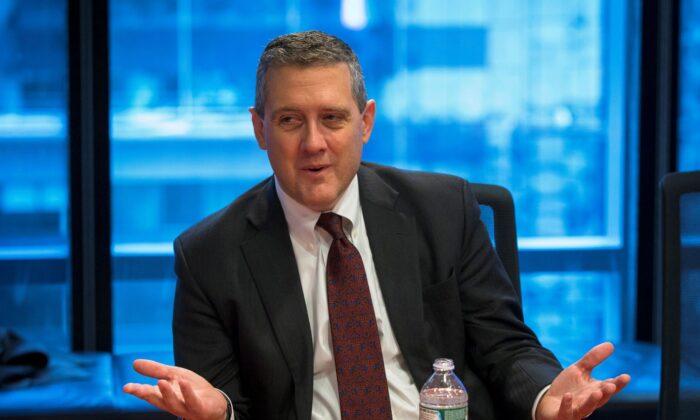Federal Reserve policymakers on Thursday expressed relief that inflation continued easing in December, paving the way for a possible step down to a quarter-point interest rate increase when the U.S. central bank meets in just under three weeks.
U.S. consumer prices fell in December in the first month-to-month decline in more than 2–1/2 years, and underlying inflation slowed, government data showed on Thursday. In the 12 months through December, the so-called core CPI increased 5.7 percent, the smallest gain since December 2021 and fresh evidence the Fed’s aggressive rate increases are having the desired effect.
“We are in fact constraining the economy and presumably in the process constraining inflation. That means for me I can be a little more nuanced,” in deciding the size of upcoming rate increases, Richmond Federal Reserve president Tom Barkin said in comments to reporters in Richmond. After raising rates by half a point at its December meeting, Barkin said he was “in concept supportive of a path that is slower but longer and potentially higher” depending on how inflation behaves.
“Hikes of 25 basis points will be appropriate going forward,” Philadelphia Fed president Patrick Harker said in a speech to a local group in Malvern, Pennsylvania, adding that once rates get just above 5 percent, “I expect that ... will be restrictive enough that we will hold rates in place to let monetary policy do its work.”
The December inflation data was “welcome news,” Atlanta Fed president Raphael Bostic said in an interview with CBS News. “It really suggests inflation is moderating and that gives me some comfort that we might be able to move more slowly.”
The Fed set the target policy rate between 4.25 percent and 4.5 percent at its December meeting. Data since then has shown inflation easing and the labor market slowing modestly from the torrid pace of job and wage growth through much of 2022.
The data has kept the Fed’s hope of a “soft landing” in view, and led policymakers this week to talk more openly of scaling rate hikes back to the quarter point increments the Fed used more commonly in recent decades.
In contrast to the first half of 2022, when those most concerned about inflation called for larger rate increases, no one is publicly pressing their colleagues for a half point increase—even as some have remained open to the idea.
“It is encouraging that we got some information today that went in the right direction,” on inflation, St. Louis Fed President James Bullard said at an event organized by the Wisconsin Bankers Association.
Bullard noted inflation remains far above the Fed’s 2 percent goal, and he repeated that he would like the central bank’s policy rate to exceed 5 percent “as soon as possible.”
But, after a year in which he was an outspoken advocate for larger increases, Bullard did not push back against smaller increases moving forward.
Still, Fed policymakers remain aligned around further hikes—whatever the size—and a final destination somewhere above 5 percent.
“We still have work to do. Inflation is too high, and we will need to stay on the case until it is sustainably back to our 2 percent target,” Barkin said in comments to the Virginia Bankers Association.
The economy continues adding jobs even as growth slows, Barkin noted. If anything, he said, recent data on economic activity has delayed the risk of recession.

Higher for Longer?
U.S. stocks rose after the release of the CPI data. Traders of futures tied to the Fed’s policy rate bet heavily on a downshift to quarter-percentage-point hikes starting at the Jan. 31 to Feb. 1 meeting and a pause just below 5 percent, with rate cuts priced in for later in the year.That view remains in contrast to where Fed officials insist they are heading: Not just a bit higher, but with a bias to remain there for the potentially extended period of time it may take for inflation to slow credibly toward the Fed’s target.
The Fed’s Dec. 13 to 14 meeting minutes show no central bank policymaker expected any rate cuts for all of 2023. Atlanta Fed President Raphael Bostic this week said his base case is that rates will remain high through 2024.
While inflation over the last three months has gone in the “right direction,” Barkin said on Thursday that “you have to be careful about declaring victory too soon ... Inflation is going to be more persistent than a simple drop down to 2 percent,” possibly requiring rates to say at a restrictive level longer than anticipated.
Fed policymakers have repeatedly said they want to avoid repeating the mistakes of the 1970s, when the central bank raised rates and then cut them when inflation appeared to recede, only to have to raise borrowing costs even higher to bring the price pressures back in line.
The Fed ultimately pushed borrowing costs and the U.S. unemployment rate into double-digit territory during that period before stopping the upward spiraling of prices.
Fed policymakers say they do not expect the unemployment rate, currently 3.5 percent, to rise much more than a percentage point in the course of the current inflation fight.





